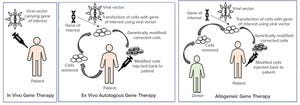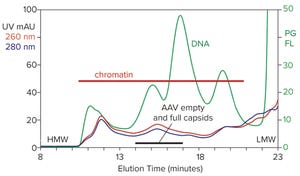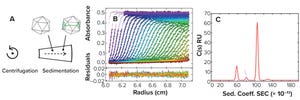November-December 2020 Featured Report
Viral vectors are synonymous with gene therapies, so their development, production, and processing are of upmost importance to all gene therapy researchers and manufacturers. Every year, I look forward to attending the Cell and Gene Bioprocessing and Commercialization conference in Boston and talking to leaders in industry and academia about their current approaches to advancing gene therapies. Like most other meetings this year, the conference was entirely online and had to provide a shortened agenda. Nonetheless, there was no shortage of interesting presentations, plenaries, speaker panels, and even live virtual laboratory tours. During 19–22 October, two of the five conference tracks focused on the progress and current concerns for ex vivo and in vivo gene therapies. Below, I highlight a few of my favorite presentations and speaker panels (by topic). They focused on current steps toward implementing new technologies and strategies for reducing timelines and costs and improving existing methods. Many pr...
Cell, gene, and tissue (CGT) therapies and other advanced-therapy medicinal products (ATMPs) have made tremendous progress over the past decade. They are different from other biologics and small molecules because of their inherent complexity and variability. Although many unknowns remain about the development of these products, their clinical success has enabled the CGT therapy and ATMP fields to advance rapidly. We are seeing an increase in the number of marketing authorization applications (MAAs) filed in the European Union and new drug applications (NDAs) filed in the United States for these and other products in the pipeline. The US Food and Drug Administration (FDA) and European Medicines Agency (EMA) expect an upsurge in the number of CGT therapies and ATMPs to be launched on the market in the near term (
1, 2
).
Figure 1: Types of gene therapies
Development of such advanced products involves tight timelines and high costs, and several biomanufacturers have complex but novel approaches to nonclinica...
Figure 1: Analytical size-exclusion chromatography (SEC) of filtered harvest prestained with PicoGreen, monitored with UV and fluorescence; AAV8 lysate, 5.6 x 1010 vp/mL (HMW, LMW = high, low molecular weight, PG FL = PicoGreen fluorescence).
With its first licensed therapeutic now marketed worldwide (
1
), adeno-associated virus (AAV) has become a preferred vector for gene therapy. However, unlocking its full potential still poses challenges, many of which are associated with purification. The first involves the transition from upstream to downstream processes. AAV-bearing lysates are laden with debris that foul filtration media and limit or prevent concentration. Another challenge involves reduction of soluble host-cell DNA, which is complicated by its strong association with nucleoproteins. A third involves elimination of empty capsids. Currently, ultracentrifugation meets that need, but scale-up issues make chromatographic alternatives attractive. A fourth challenge involves the need for rapid, accura...
Quantitation of different capsid species in viral-vector gene-delivery drugs, including recombinant adenoassociated virus (AAV) therapies, is essential for proper assessment of critical quality attributes before regulatory approval and during commercial production. If rAAV full-capsid percentages are maximized, and variants such as empty or partially-filled capsids are reduced as much as possible, then potency is increased for improved dosing and tolerance outcomes.
Traditionally, characterization of AAV purity with respect to empty, full, and other variants has been performed by techniques such as electron microscopy. Separate protein/nucleic-acid quantitation has been performed by dual assays such as enzyme-linked immunosorbent assay (ELISA) and quantitative polymerase chain reaction (qPCR). Such approaches have some shortcomings, however. For example, capsid and genome quantification by ELISA–qPCR or UV absorbance suffers from poor accuracy, and methods such as high-performance liquid chromatography (H...
Subscribe and receive the latest insights on the healthy food and beverage industry.
Join 47,000+ member. Yes, it's completely free.









